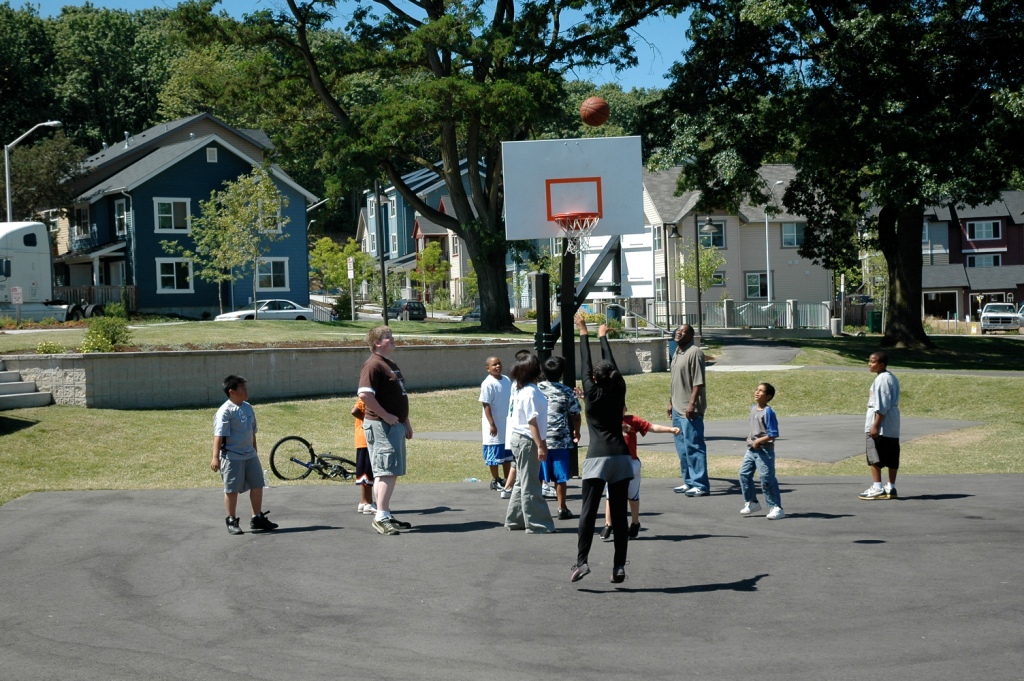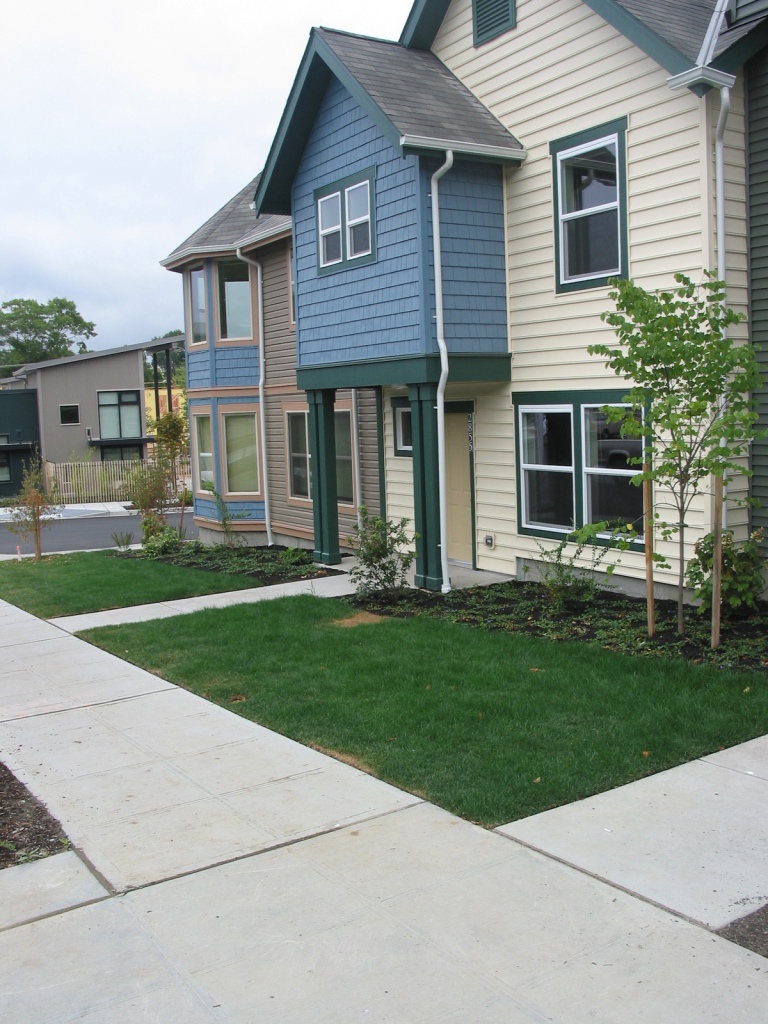Rainier Vista redevelopment plan
Built in the 1940s to house defense workers, the wood frame buildings of the old Rainier Vista were designated as public housing by the Lanham Act in the early 1950s.
They housed veterans returning from World War II and then low-income families for five decades, but as years of use and weathering took their toll, the units at Rainier Vista became expensive to maintain and less effective as public housing.
Reconnecting with South Seattle
New Urbanist planning and design principles were put to use at Rainier Vista, with housing designed to bring together the neighborhood's diverse mixture of residents. A new street grid with narrow streets slows traffic, while front porches located close to the street give residents a chance to interact. Low fences around private back yards give households a sense of security and ownership of their own space, but still allow for visibility and conversation with neighbors.
Developing neighborhood amenities
Housing at Rainier Vista is located close to a number of large and small parks, playgrounds, and community gardens – all which provide open space for residents to get outside, meet neighbors, and play with their children.
Rainier Vista is also within a short walk from the Columbia City business district, where a rich variety of retail shops, restaurants, and entertainment options await visitors.
Residents have access to Neighborhood House’s Rainier Vista Center, where they can access a variety of services necessary for self-sufficiency. The Center has job programs, case management services, a computer lab, a Head Start program, some other services, and also a community gathering space. The Rainier Vista Boys & Girls Club offers a wide range of programs and activities as well.

Creating a livable mixed-income community
Rainier Vista’s redevelopment was carried out with the aim of creating a successful, well-functioning mixed-income community. Today, nearly 900 families of low-income and market-rate renters, as well as homeowners of both market-rate and affordable homes, share this wonderful community and call it home.
Today, Rainier Vista provides housing for residents spanning a broad income range, as follows:
|
Housing type |
Income Category |
Units |
|
Public housing |
Extremely low income |
251 |
|
Senior housing |
Extremely low income |
78 |
|
Disabled rental housing |
Extremely low income |
22 |
|
Affordable rental housing |
Extremely low and low income |
226 |
|
Rental housing |
Any income level |
48 |
|
Affordable for-sale housing |
Low income |
59 |
|
For-sale housing |
Any income level |
211 |
|
Units of on-site housing built or in the planning stage |
|
895 |
Financing
In total, approximately $240 million was invested in the redevelopment of Rainier Vista. The money went towards the construction of rental and for-sale housing, a complete new infrastructure, the creation of parks, open spaces, and public art, and community facilities like the Boys & Girls Club and the Neighborhood House Rainier Vista Center:
|
Funding source |
Amount |
|
Private investment |
$130,000,000 |
|
Tax-exempt borrowing |
$35,000,000 |
|
HOPE VI grant |
$35,000,000 |
|
Other public funding |
$22,000,000 |
|
Tax-credit partnership equity |
$18,000,000 |
|
Total investment |
$240,000,000 |

